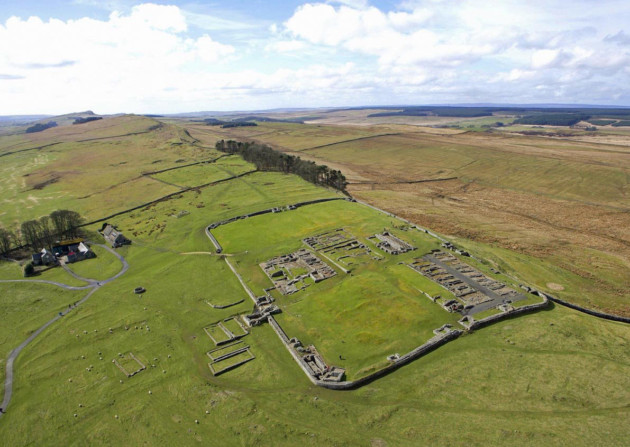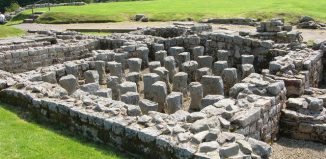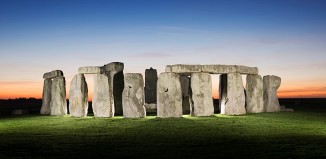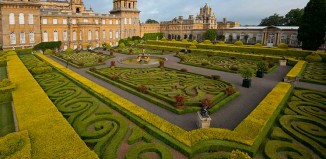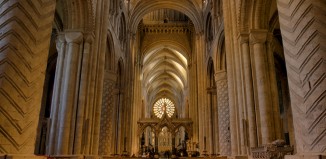Housesteads Roman Fort
It is surely an irony of history that Housesteads has a gang of bandits to thank for its status as the best preserved Roman fort in Britain, if not northern Europe
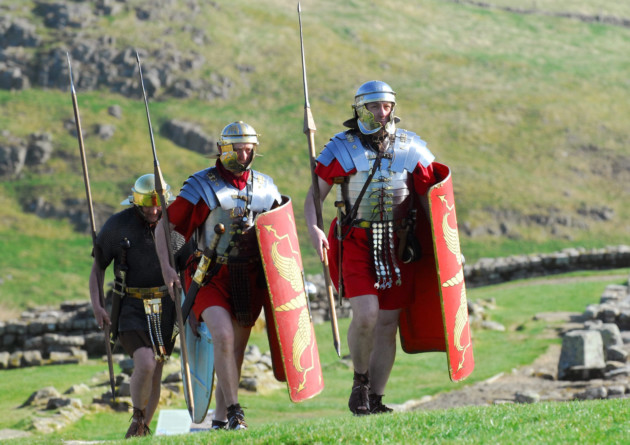
At a time when Roman monuments up and down the country were being plundered for building materials, the presence of a notorious band of Border Reivers at the fort proved a deterrent to anyone who had their eye on a few choice pieces of stone.
The Armstrongs set up home in the fort in the 16th century, using it as a base from which to harry the country on both sides of Hadrian’s Wall and fall upon unwary travellers. They also left a visible legacy in the form of a bastle, a fortified farmhouse, which still stands by the south gate to the fort. Today, Housesteads can be approached with much less foreboding, and, thanks to the Armstrongs, with much more profit in terms of the surviving Roman buildings.
As a site of excavation since the 1830s, Housesteads has been a popular destination with those curious about Roman Britain for more than 150 years. But the fort’s museum has provided an extra dimension to the experience.
Using artefacts found in and around the fort, the museum aims to shed light on the personal lives of the soldiers stationed at the northern frontier of the Roman Empire. Leather soles from hob-nailed boots, cooking pots and metal-working material provides an insight into their everyday lives, while their military equipment is represented by armour rings, a handle used to carry a helmet and buttons to fasten clothing. Imported pottery from France and gems from Egypt attest that despite its peripheral location, Housesteads was very much integrated into the Roman trading network.
The museum also displays items from a building near the centre of the fort which is thought to have been a hospital, a relative rarity in a Roman fort and a sign that life on the border was not entirely without its comforts. A variety of equipment, including spatulas to mix tinctures, a spoon for inserting medicine into the nose or throat and a bronze probe used to cauterise wounds, is on show, as is a gravestone of one Anicius Ingenuus, described in his epitaph as a medicus ordinarius, or doctor.
“When you look at the whole Roman Empire, this would have been quite a cushy posting,” says Sue Hodnett, English Heritage site manager at Housesteads. “It was fairly safe, there was a hospital on site and they would have been well-taken care of.”
The museum also features a short video, narrated by Bernard Hill, telling the history of the fort from its construction around AD124, two years after work started on the wall, which then marked the northern limit of the empire.
Housesteads, known to the Romans as Vercovicium, or ‘the place of effective fighters’, was briefly abandoned in the AD140s when the army pushed up into Scotland to establish a new frontier in the Antonine Wall, only to be reoccupied 20 years later until the end of the Roman occupation and even beyond.
For much of its life as a Roman outpost, Housesteads, about 12 miles west of the Roman town of Corbridge, was garrisoned by Tungrians, infantry from modern-day Belgium, occasionally augmented by Frisians from the Rhineland.
On paper, Housesteads held 800 men, but evidence from nearby Vindolanda suggests that garrisons were frequently depleted as soldiers were posted elsewhere, on leave or assigned to other duties. It may be that the full complement was rarely needed: there are no signs of any battle having taken place at the fort and during the later Roman period some of the gateways were blocked up, presumably because they was seldom used.
The forts were never intended for defence. Instead they were strategically positioned along crossing points, monitoring traffic between the Roman province of Britannia and the barbarian lands beyond. The location of Housesteads, atop a plateau called the Whin Sill, gives it a commanding view of land to both north and south.
The topography of the site is also thought to be responsible for the unusual orientation of the fort. While most forts sit astride the wall with the longer sides on east and west, Housesteads abuts the wall and has its longer sides on the northern and southern ends.
Excavations in the 1970s and 1980s, concentrating on the barrack blocks in the north-eastern corner of the fort, provided an insight into the lives of the soldiers when they were not on patrol. Copious evidence of metal-working suggests that repair of military kit, as well as perhaps fashioning personal objects such as bangles and beads, was a key occupation during the soldiers’ downtime.
But the fort was not abandoned when the Romans withdrew from Britain in AD410, according to archaeologist and author Alan Rushworth. There are signs including new buildings that it continued in use, albeit no longer as a military camp.
“It may have been descendants of the garrison or other people may have moved in, but we know that occupation carries on, although we don’t know for how long,” he says.
Discovery of a cist burial, where the body is placed in a stone coffin, suggests Housesteads may have been the site of a church in the 6th or 7th centuries, and it later became a farm, as well as sometime home to Border Reivers.
Agricultural activity, as well as new buildings, continued to damage the Roman archaeology, and the preservation of the fort was only assured in the 1830s when it was purchased by John Clayton, who did much to ensure the survival of forts along the wall by buying them and opening them to visitors. A century later Housesteads was given to the National Trust and is now managed on its behalf by English Heritage.
Housesteads is the most excavated fort on the wall. As well as the perimeter wall, today’s visitors can see the commanding officer’s house, headquarters buildings, hospital and granary, complete with ‘dog-flaps’ where dogs were let in to stop rats and mice getting at the grain, in addition to the barracks. Although the preservation of some buildings runs to only three or four courses, many of the walls survive to several feet. Most of the western third of the fort is unexcavated, however, barring the ovens in the south-west corner.
Looking over the walls and across miles of rolling Northumberland countryside, it is easy to imagine the fort standing in splendid isolation, a beacon of Roman power in an otherwise untamed landscape. But the reality was very different, according to Lindsay Allason-Jones, an archaeologist and visiting fellow at Newcastle University and an authority on Hadrian’s Wall.
For alongside the fort was a vicus, a type of civilian settlement that sprang up wherever Roman soldiers were stationed for any length of time. As well as the soldiers’ families and dependants, the vicus would have also contained retired soldiers, shops, restaurants and brothels. The result was much more like a medieval town in all its grimy glory than a lone outpost of empire.
“It would have been incredibly noisy and incredibly smelly and probably covered in a pall of smoke,” says Ms Allason-Jones. “There would have been people from all over the empire there so it would also have been very cosmopolitan.”
Geophysical surveys have plotted the extent of the vicus, but although a few sections are visible outside the south gate, the bulk of the settlement to the west of the fort is unexcavated.
Some artefacts from the vicus have made it into the museum, including a mould for counterfeit coins, drinking vessels and a loaded dice. It may have been an argument prompted by sharp practice at the gambling table that led to one of Housestead’s most notorious finds: a murder where there is no mystery over whodunit.
Excavations in a building identified as a tavern just south of the fort in the 1930s uncovered the bodies of a man and a woman. The man had been killed by a knife to the ribs, and the tavern then re-floored to hide them from view. Only the landlord would have been able to raise the floor of the tavern by several feet.
Unfortunately, bones in the 1930s were not thought to be capable of revealing much of interest and the bodies were subsequently lost, taking their remaining secrets with them.

